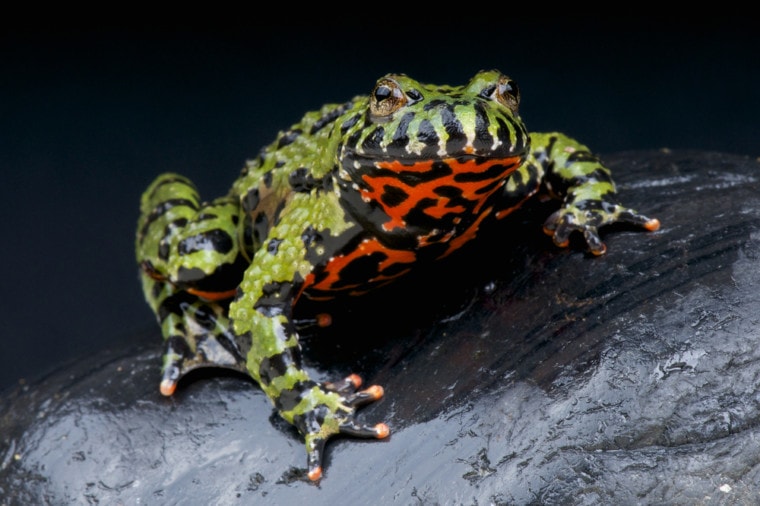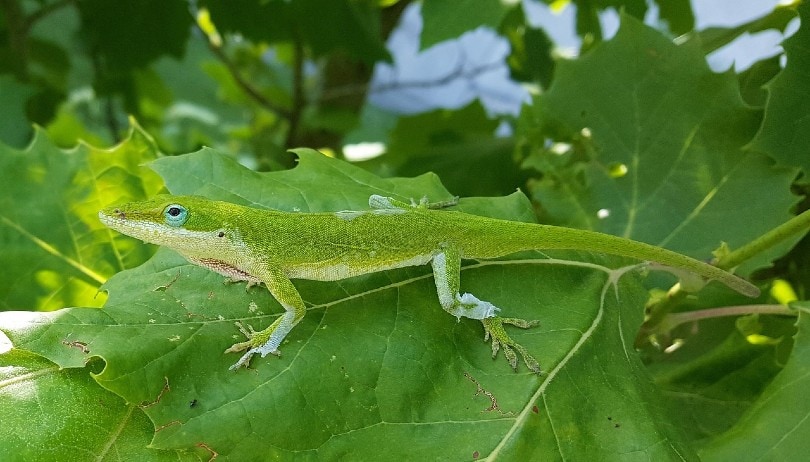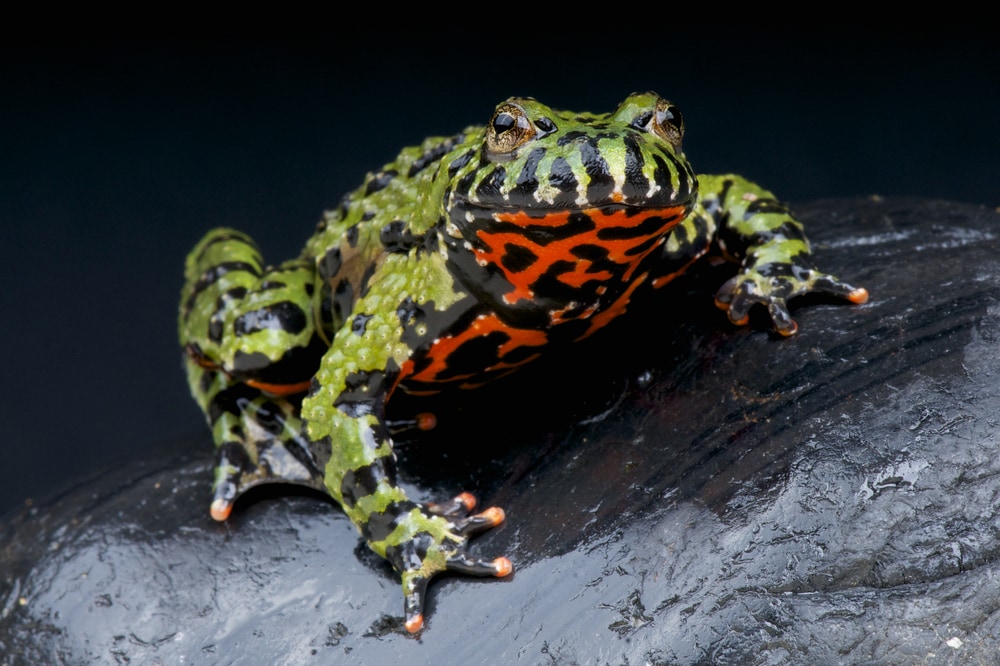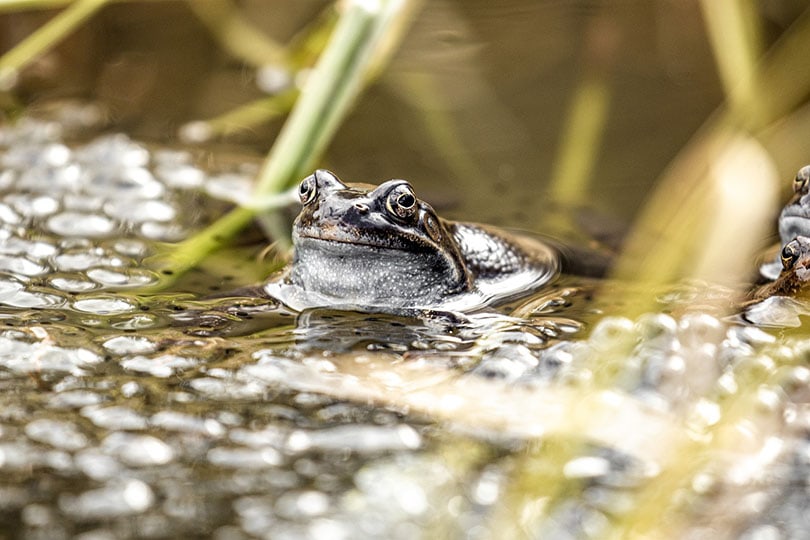
The fire-bellied toad is a fascinating creature part of the Bombinatoridae family. These toads have an interesting pattern with attractive colors. They are known for being social with each other but do have certain risks as tank mates. Some species of fire-bellied toads are known to secrete a toxin through their skin called bombesin.
Since the fire-bellied toad releases toxins if they feel threatened by other creatures in their presence, it is difficult to keep them with other types of amphibians and fish. It is not uncommon for the toxins to build up and cause harm to fellow tank mates. However, you may be able to keep your toad with some friends.
The 3 Best Tank Mates for Fire-Bellied Toads
1. Madagascar Giant Day Gecko (Phelsuma grandis)

| Size: | 9 – 11 inches (23 -28 cm), females smaller than males |
| Diet: | Omnivore |
| Minimum Tank Size: | 40 gallons |
| Care Level: | Intermediate |
| Temperament: | Males aggressive towards conspecifics |
These geckos are native as a species to Madagascar and have a bright green coloration with orange on the head. Hence the name, these are some of the gecko species that are most active during the day.
Like most gecko species, the males can be quite quarrelsome and territorial and will not accept other males in their neighborhood. They only allow females to enter their territory. In captivity, where the females cannot escape, the males can also sometimes seriously wound a female. Therefore, it is best to only house one with your fire-bellied frogs.
2. Green Anoles (Anolis carolinensis)

| Size: | 5 – 8 inches (12.5–20.3 cm) including tail |
| Diet: | Carnivore |
| Minimum Tank Size: | 40 gallons |
| Care Level: | Experienced keepers only |
| Temperament: | Males aggressive towards conspecifics |
The anole is a tree-dwelling species native to the southeastern United States. They look great with fire-bellied toads and make quite the fascinating pair. However, anoles require a more experienced owner who can provide the right conditions for them even with a tank mate.
Male anoles should not be housed with other males, and should not be able to view their reflection, as they attack their own reflection out of territorial aggression. They also have some unique care requirements which make them best left to the experienced keeper.
3. Tree Frogs (Hylidae)

| Size: | 2 – 5 inches |
| Diet: | Insectivore |
| Minimum Tank Size: | 30 gallons |
| Care Level: | Intermediate |
| Temperament: | Peaceful and inquisitive |
These are small amphibians that do great with toads. They have the same setup and both the tree frog and fire-bellied toad enjoy spending the majority of their time in branches and hiding amongst leaves. They have similar hydration requirements which makes them excellent for an enclosure with a body of water.
What Makes a Good Tank Mate for Fire-Bellied Toads?
The best tank mate for a fire-belly toad would be another amphibian. This is because they seem to get along quite well.
Though toads need access to water, they aren’t good tank mates for fish. Fire-bellied toads are very weak swimmers and only enjoy sitting in very shallow water (for hydration, as they drink by absorbing water through specialized areas in their skin). They should only be in water that is about 1-2 inches deep, at most. This is usually not enough to house fish.

Where Do Fire-Bellied Toads Prefer to Live in the Enclosure?
The fire-bellied toad prefers to live near the bottom of the enclosure. They enjoy hiding in the moist substrate and taking cover under a nice leaf. The bottom of the enclosure seems to hold the most moisture and this prevents the frog from drying out. Fire-bellied toads will sometimes climb towards the middle of the enclosure depending on where they prefer to eat.
Water Parameters
Fire-bellied toads are semi-aquatic, which means they live on both land and in water. Whenever the toad is a tadpole, it lives exclusively in the water, but it adapts to living on land. Still, a full-grown toad would like to hang out in pools of water.
The water needs to be healthy so that the toad can remain healthy. Ammonia and nitrate levels should be ideally 0 PPM, but they might be as high as 0.25 PPM. The nitrate levels should be below 30 PPM.
Before placing your fire-bellied toad in the enclosure, make sure to dechlorinate the water. Additionally, clean the water out frequently so that the toad and tank mates are healthy.
Size
The fire-bellied toad can grow to be 2 inches long, making the fire-bellied toad very small. At the very minimum, get the fire-bellied toad a 20-gallon enclosure. If you add tank mates, increase the size so that all creatures have adequate space.
Conclusion
The fire-bellied toad can get along with many different species. This can make it fun and interesting to design an enclosure for them and a few tank mates. These social toads will appreciate having friends around them and it will make caring for them extra special because you get to incorporate some of your favorite tank mates with your fire-bellied toad. Many owners claim that their toad is livelier and more active when kept with other creatures which makes watching them more enjoyable.
Related Read:
Featured Image Credit: reptiles4all, Shutterstock








